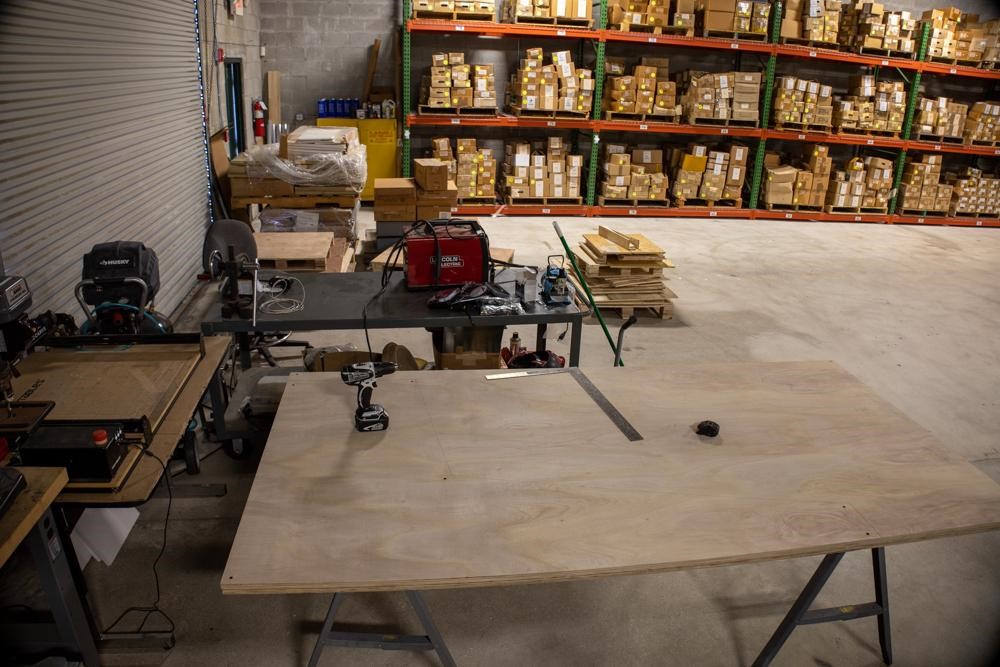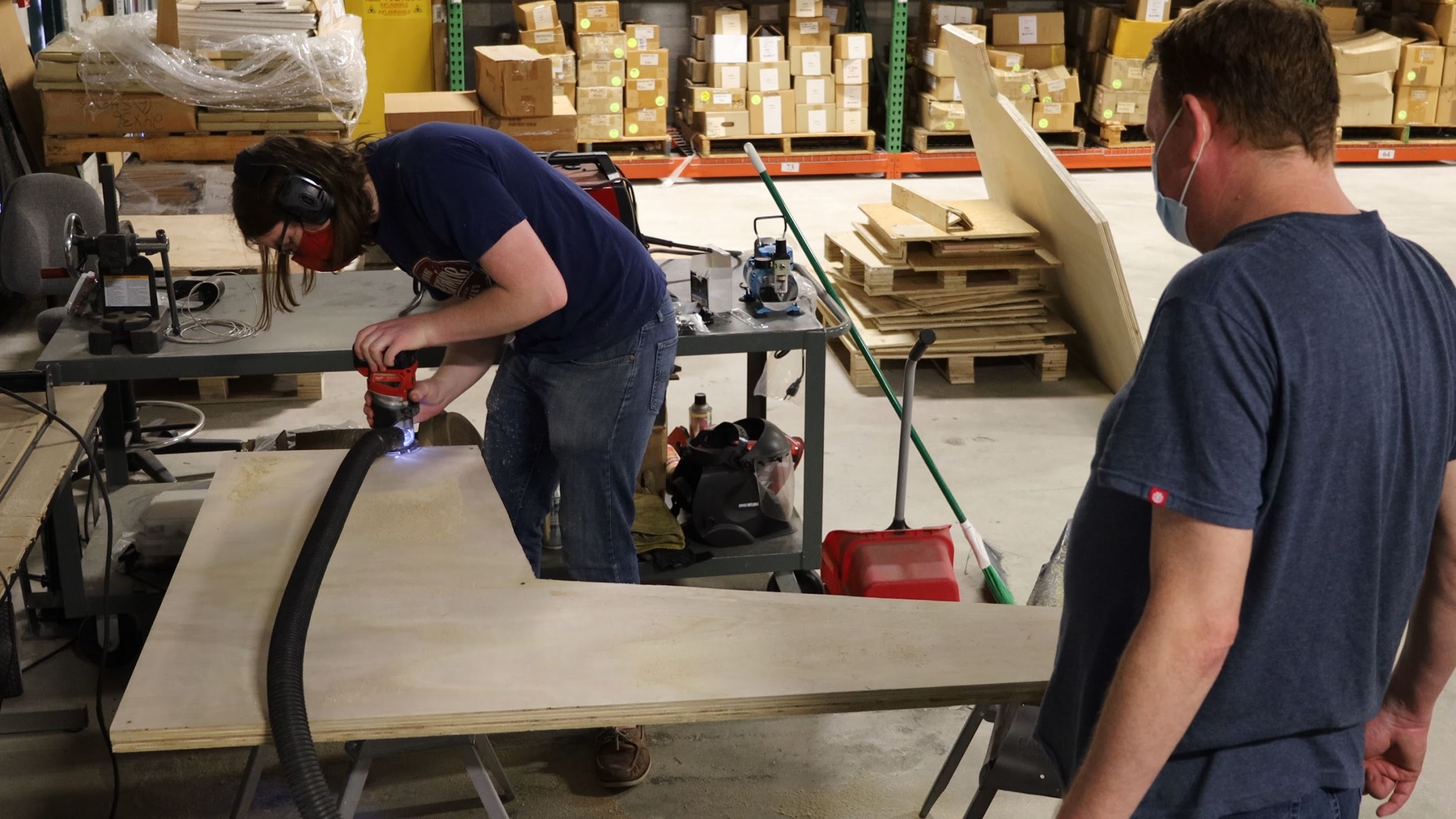Skee-Ball Machine
Skee-Ball Machine
Feb 02, 2021
James Laumeyer
Keeping up with the arcade theme, my next project is a Skee-ball machine.
As with any project, the best way to succeed is a good design to work from. As such the first step was to define the parameters that this project had to meet in its design. The parameters I worked with were as follows:
- The project must have the ability to be easily disassembled to fit on a pallet for easy storage and transport.
- The project must have the ability to have a scoring system added.
- The project will be based around a 90mm hollow stainless ball as the article used for the actual Skee-balls, as such tolerances need to be made accordingly.
- A reliable return system needs to be made to bring the balls back down to a corner of the board where the player can easily retrieve them.
With these requirements in mind the next step was to create a model in Solidworks to get the dimensions right and have them to work off of while building the machine. The following are the renderings of the model I came up with.


One thing about this design that you may find yourself asking at first glance is, “How are you going to create those bends in ¾” plywood?” The answer is a very simple technique called Kerfing. This is where you take a piece of wood and run it over a table saw without cutting all the way though to create a dado in the wood and you repeat this processing moving the board over a given distance depending on the thickness of the wood and the radius of the curve. To figure out the parameters for this technique I will be using the site, https://www.blocklayer.com/kerf-spacing.aspx.
If you are looking at this project as something you would like to build for yourself, the files can be found on my GrabCad account here: https://grabcad.com/library/skee-ball-project-1. There are a few notes about the model though, it is only about 90% identical to what the actual final build is like for a couple reasons and the differences thus far are as follows.
- In order to stabilize the project while building it a 17” x 36” piece of plywood was added to the bottom of both sections, while there were other ways to stabilize the project this was the simplest and easiest.
- Between the ramp and return layer on the actual machine there is a funnel system made of a couple pieces of 4in wide plywood that just guide the balls to the retrieval hole. This was left out of the model as getting the exact angles right in Solidworks and keeping the mates happy would have taken enough time that it just wasn't worth doing for something that does not need to be precise.
- All plywood used on the final model was done with ¾” plywood instead of a mix of ¾” and ½” as it made more sense to make it all out of the same size wood from a construction standpoint.
- The final product will use butterfly latches, https://www.amazon.com/QWORK-Stainless-Keeper-Spring-Butterfly/dp/B085RQ3TNX/ref=sr_1_2?dchild=1&keywords=butterfly+latch&qid=1612247014&sr=8-2 , to keep the two halves aligned and to keep the back door closed during game play.
- The back door will be hinged with a 36in long continuous hinge.
Once the Model was finished the next step was to start building. To start I layed together two pieces of 3/4in plywood on top of each other, squared them up and screwed them together. This was done so that I got the two side pieces as close to identical as possible

Once this was laid out I then went and rough cut the lines with a circular saw and a jigsaw on places I didn't want overcut marks from the blade

I followed this up by using a router to shave off any small overhangs one board might have over the other so that they were as close to identical as I was capable of making them

After I finished that the next step was to split the boards into their bottom and top sections for assembly. I did not go over these edges with a router as since they are going to be meshing in the final assembly any routing would leave potential for a gap in the final product

The next step was to use the table saw to rip pieces of wood for the front panel, internal return ramp and bottom panel. After which I started assembling the bottom portion with a Brad nailer. If you do not have a brad nailer finish screws can be used as well but they are not as forgiving if you miss the hole and there is potential for board splitting if your pilot hole is not correct

After the assembly of the bottom portion up to this step the next step is to assemble the top half in a similar manner. One thing to keep in mind is that when putting the return ramp in the top half the easiest way to get everything to mesh in place is to set both halves on there sides and then align the tophalf’s ramp board with the bottom halves





At this point it is now time to start the prepwork for painting. As I was not a fan of the sharp edges of the plywood I took a moment to put a roundover bit on the router and run it around the edge of the frame giving it a nice fileted edge and a more professional look. After this step I went over the entire thing with an orbital sander starting with 120grit sandpaper and working up to 320grit for a nice smooth surface for the paint to adhere to

Once all the sanding is done it is time to start painting parts with their respective colors, which will be covered in the next blog update
